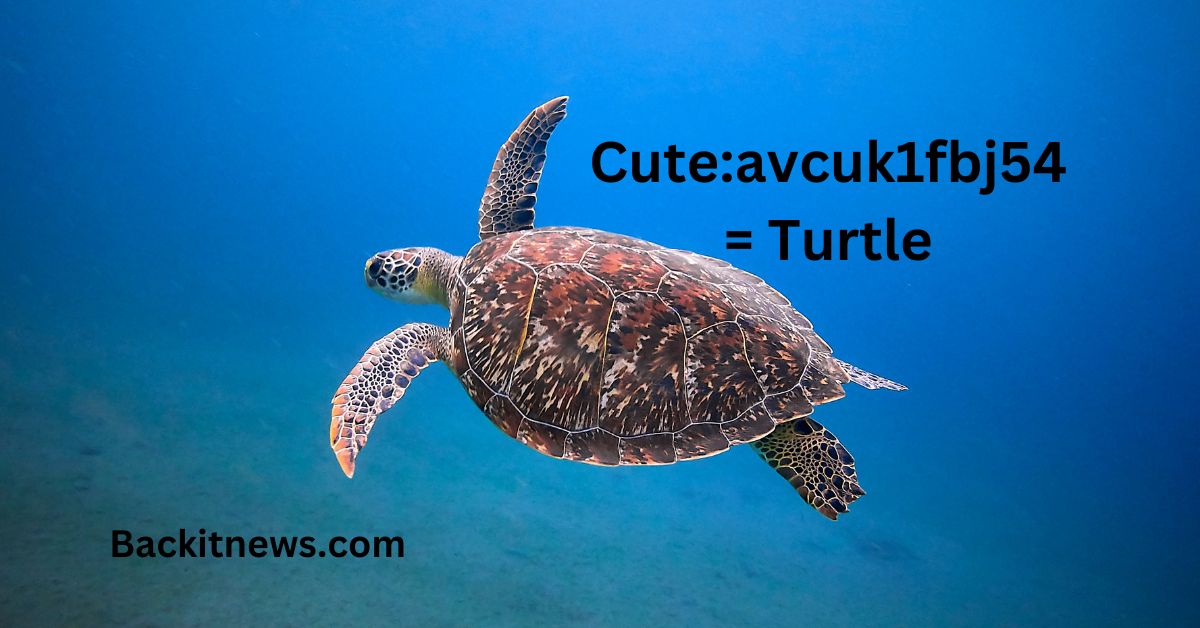Cute:avcuk1fbj54= Turtle:Understanding and Caring for These Adorable Reptiles
The Cute:avcuk1fbj54= Turtle has captured hearts around the world with its charming looks, unique characteristics, and manageable size. Known for their gentle and friendly demeanor, these turtles make wonderful pets and are popular among wildlife enthusiasts. In this guide, we’ll explore what makes the Cute:avcuk1fbj54= Turtle so special, from its physical characteristics and habitat needs to its social behaviors, dietary requirements, and proper care techniques. Whether you’re considering adopting one or are simply fascinated by this adorable creature, this guide provides a thorough understanding of the Cute:avcuk1fbj54= Turtle.
Why the Cute:avcuk1fbj54= Turtle Is So Popular
The Cute:avcuk1fbj54= Turtle has gained popularity due to its adorable appearance and approachable nature. With an expressive face and colorful shell, this small turtle appeals to both pet owners and animal lovers who appreciate its aesthetic charm. Here are a few reasons why people are drawn to the Cute:avcuk1fbj54= Turtle:
Unique Shell Patterns and Colorful Appearance
Each Cute:avcuk1fbj54= Turtle has a uniquely patterned shell that often features vibrant colors and intricate designs. These shells are made of bone and covered with scutes, providing a sturdy defense. The shell not only serves as armor but also adds visual appeal, making each turtle unique.
Bright Eyes and Playful Expressions
One of the most endearing qualities of the Cute:avcuk1fbj54= Turtle is its expressive face. Their bright, clear eyes give them a curious and friendly look, adding to their overall appeal. Many people are drawn to their seemingly “smiling” faces, which make them easy to bond with as pets and delightful to photograph.
Small, Manageable Size
The Cute:avcuk1fbj54= Turtle is smaller than many other turtle species, making it easier to accommodate as a pet. Their compact size allows them to live comfortably in aquariums or small ponds, requiring less space than larger turtles. This makes them a practical choice for people who want a pet turtle but have limited space.

Natural Habitat and Environmental Needs
To provide the best care for a Cute:avcuk1fbj54= Turtle, it’s essential to understand its natural habitat and environmental preferences. These turtles are typically found in warm, tropical climates and require access to both water and land.
Preferred Environment
In the wild, the Cute:avcuk1fbj54= Turtle thrives in freshwater habitats such as ponds, rivers, and lakes with calm, slow-moving water. These areas provide safe environments for swimming, finding food, and basking in the sun. A habitat that closely mimics these conditions helps keep them healthy and content.
Land and Water Needs
The Cute:avcuk1fbj54= Turtle requires both aquatic and terrestrial areas to thrive. Water allows them to swim and regulate their body temperature, while a basking spot on land gives them a place to warm up and absorb sunlight, which is essential for vitamin D production. Providing both water and land in their enclosure ensures they have the necessary resources to stay healthy.
Diet and Nutrition: Feeding the Cute:avcuk1fbj54= Turtle
A well-rounded diet is critical for the health and well-being of the Cute:avcuk1fbj54= Turtle. As omnivores, these turtles enjoy a varied diet that includes both plant-based foods and protein sources.
What Do Cute:avcuk1fbj54= Turtles Eat?
In the wild, they consume a mix of leafy plants, algae, small fish, and insects. As pets, their diet can include commercial turtle pellets, leafy greens like kale and romaine lettuce, and occasional protein treats like insects or pieces of fish. This balanced diet helps support shell health, immune function, and general vitality.
Importance of a Balanced Diet
Ensuring a balanced diet is crucial to prevent health issues in the Cute:avcuk1fbj54= Turtle. Leafy greens provide calcium, which is vital for shell strength, while proteins offer the energy and nutrients needed for growth. Supplementing their diet with calcium is also recommended to prevent shell deformities and maintain overall health.
Social Behaviors and Interaction
The Cute:avcuk1fbj54= Turtle is known for its friendly and curious nature, making it a joy to observe. These turtles are generally non-aggressive, allowing them to interact safely with humans and other turtles.
Social Dynamics and Bonding
Although independent by nature, the Cute:avcuk1fbj54= Turtle can recognize and bond with its primary caregiver. Many pet owners observe that these turtles respond to feeding times and may even approach the sides of their enclosure when they see a familiar face. This friendly behavior makes them a popular choice for people who want a pet with some personality.
Playful and Curious Nature
While they are not typically “playful” in the way dogs or cats are, the Cute:avcuk1fbj54= Turtle shows curiosity in its environment. They are often seen exploring their surroundings, swimming, and climbing on objects in their tank. Adding rocks, plants, and floating items to their habitat can encourage exploration and keep them mentally stimulated.

Lifespan and Health of the Cute:avcuk1fbj54= Turtle
The Cute:avcuk1fbj54= Turtle can live a long, healthy life with proper care and attention. Understanding their health needs and expected lifespan helps owners provide the best environment for these turtles.
| Aspect | Details |
|---|---|
| Average Lifespan | With proper care, cute= turtles can live 15-25 years, making them a long-term commitment. |
| Health Essentials | Clean water, a balanced diet, and adequate UV lighting are essential for preventing common health issues. |
| Common Health Issues | Shell deformities from lack of calcium or UV light, and infections from poor water quality are possible. |
| Prevention Tips | Maintain clean water, provide UV light for basking, and ensure a diet rich in calcium to support shell health. |
| Regular Health Checks | Routine observation and occasional vet check-ups help identify and address health issues early. |
Post You Might Like: Transparent:lovn-k4yboc= Roblox
Proper Care for the Cute:avcuk1fbj54= Turtle
Providing proper care is essential for a Cute:avcuk1fbj54= Turtle to live a long, healthy life. These turtles are relatively low-maintenance, but they require specific environmental conditions, diet, and care routines to thrive.
Ideal Tank Setup
The tank setup for a Cute:avcuk1fbj54= Turtle should include a water area for swimming and a basking area with UV lighting. The water should be clean and filtered to prevent infections, while the basking area allows them to warm up and absorb UV rays. A tank size of at least 20-40 gallons is recommended, depending on the turtle’s size and age.
Daily and Weekly Care Tasks
Daily tasks include feeding, checking water temperature, and observing the turtle for any signs of health issues. Weekly tasks may involve cleaning the tank, changing the water, and inspecting equipment like filters and lights. Consistent care is crucial to maintaining a healthy environment for the turtle and ensuring they remain active and happy.

Fun Facts About the Cute:avcuk1fbj54= Turtle
The Cute:avcuk1fbj54= Turtle is not only adorable but also has several unique traits that make it fascinating to study and observe. Here are some fun facts about these turtles:
| Fun Fact | Description |
| Turtles Can Recognize Their Owners | Many cute= turtles can recognize and respond to their primary caregivers. |
| Their Shells Are Part of Their Skeleton | A turtle’s shell is made up of bones and forms a vital part of their skeletal system. |
| Each Turtle Has a Unique Pattern | No two turtle shells are the same, making each turtle unique in appearance. |
| They Love to Sunbathe | Basking in the sun or under UV light is essential for their health and vitamin absorption. |
Read To Know About: Cute:vckxjxf4zh0= Fox
Conservation of the Cute:avcuk1fbj54= Turtle
While the Cute:avcuk1fbj54= Turtle is cherished by many, it’s important to approach turtle ownership and interaction with responsibility. Wild populations of turtles face threats from habitat loss and the pet trade, making conservation efforts crucial to their survival.
Ethical Considerations for Pet Ownership
For those interested in owning a Cute:avcuk1fbj54= Turtle, it’s essential to obtain one from a reputable breeder rather than capturing one from the wild. Capturing wild turtles can disrupt local ecosystems, and domesticated turtles may carry diseases that could spread to native populations if released. Responsible pet ownership ensures that these turtles are cared for properly and prevents harm to the environment.
Supporting Conservation Efforts
To protect wild populations, many organizations are dedicated to “preserving turtle habitats” and educating the public about responsible turtle care. Supporting these organizations and promoting ethical pet ownership practices are effective ways to contribute to turtle conservation.
Enrichment Activities for the Cute:avcuk1fbj54= Turtle
Keeping the Cute:avcuk1fbj54= Turtle mentally stimulated is an important aspect of care. Like many animals, turtles can become bored if they don’t have engaging environments.
Environmental Enrichment
Adding objects like rocks, floating plants, and hiding spots in their tank allows turtles to explore, climb, and play. These items encourage natural behaviors and give the turtle an opportunity to exercise, keeping them active and healthy.
Interaction with Caregivers
While turtles are independent, they can benefit from gentle interaction. Regular feeding, observing, and handling (when necessary) can help them become familiar with their environment and caregivers. This interaction also allows for routine health checks, ensuring the turtle remains in good condition.

Conclusion
The Cute:avcuk1fbj54= Turtle is an endearing and fascinating animal that brings joy to pet owners and nature lovers alike. Known for its small size, vibrant shell, and friendly personality, this turtle species has become a popular choice for those interested in reptiles. With the right care, including a balanced diet, clean habitat, and enrichment activities, the Cute:avcuk1fbj54= Turtle can live a long and happy life. By supporting ethical pet ownership and conservation efforts, we can ensure that these delightful creatures continue to thrive for generations to come.
People Also Read: Drawing:a4z_-ymtkr8= Cat
Frequently Asked Questions (FAQs)
1. What is a Cute:avcuk1fbj54= Turtle?
The Cute:avcuk1fbj54= Turtle is a small, colorful turtle known for its vibrant shell, friendly nature, and suitability as a pet.
2. How long do Cute:avcuk1fbj54= Turtles live?
With proper care, they can live between 15 to 25 years, making them a long-term commitment.
3. What do Cute:avcuk1fbj54= Turtles eat?
These turtles are omnivores and enjoy a diet of leafy greens, insects, and small fish, along with commercial turtle pellets.
4. Do Cute:avcuk1fbj54= Turtles need UV lighting?
Yes, UV lighting is essential for their shell health and calcium absorption, helping prevent deformities.
5. Can Cute:avcuk1fbj54= Turtles live with other turtles?
They can coexist with other turtles if given enough space, but monitor for any signs of aggression or stress.
6. How big do Cute:avcuk1fbj54= Turtles get?
They remain relatively small, typically reaching only a few inches in length, making them easy to care for.
7. Are Cute:avcuk1fbj54= Turtles good pets?
Yes, they are known for their friendly nature and ease of care, making them popular pets for both beginners and enthusiasts.
8. What kind of tank does a Cute:avcuk1fbj54= Turtle need?
They need a tank with both water for swimming and a dry basking area with UV light to mimic their natural habitat.
9. How often should you feed a Cute:avcuk1fbj54= Turtle?
Young turtles need daily feeding, while adults can be fed every other day to maintain a balanced diet.
10. Can Cute:avcuk1fbj54= Turtles recognize their owners?
Yes, many owners find that these turtles recognize familiar faces and respond to feeding times and gentle interaction.







